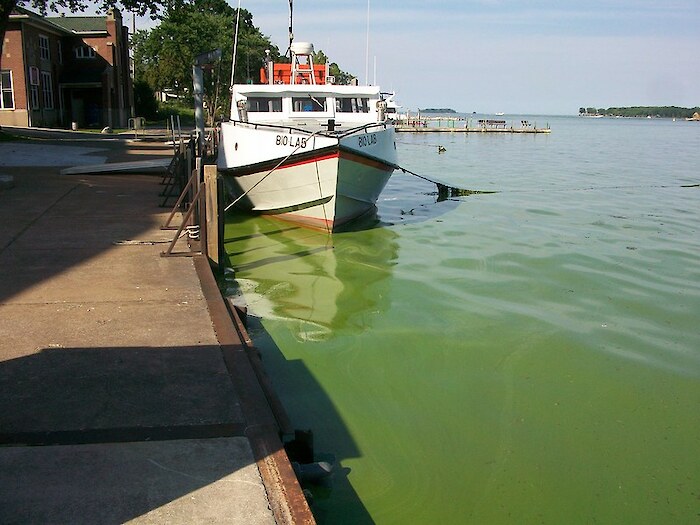
Dissolved phosphorus is indicative of too much phosphorous in the water. Phosphorus is an essential nutrient for all plants and animals. However, too much phosphorus in the water causes algae to grow in large, dense blooms, which deplete oxygen for fish and other aquatic organisms. Phosphorus enters rivers and lakes when it is washed off the land, particularly from agricultural lands that have been fertilized.
How is it scored?
Dissolved phosphorus (DP) was used as an indicator in both the watershed and lake analysis. Year-round data for 2018 were analyzed. For each DP sample, the measurement was compared to the threshold on a pass/fall basis. Site scores were averaged into an overall region dissolved phosphorus score.
The dissolved phosphorus threshold used for the Western Lake Erie basin analysis was 0.001 mg/L, from Tomlinson et al. 2010.
The dissolved phosphorus threshold used for the Western Lake Erie watershed analysis was based on the working group recommendation. The threshold was 0.02 mg/L.
